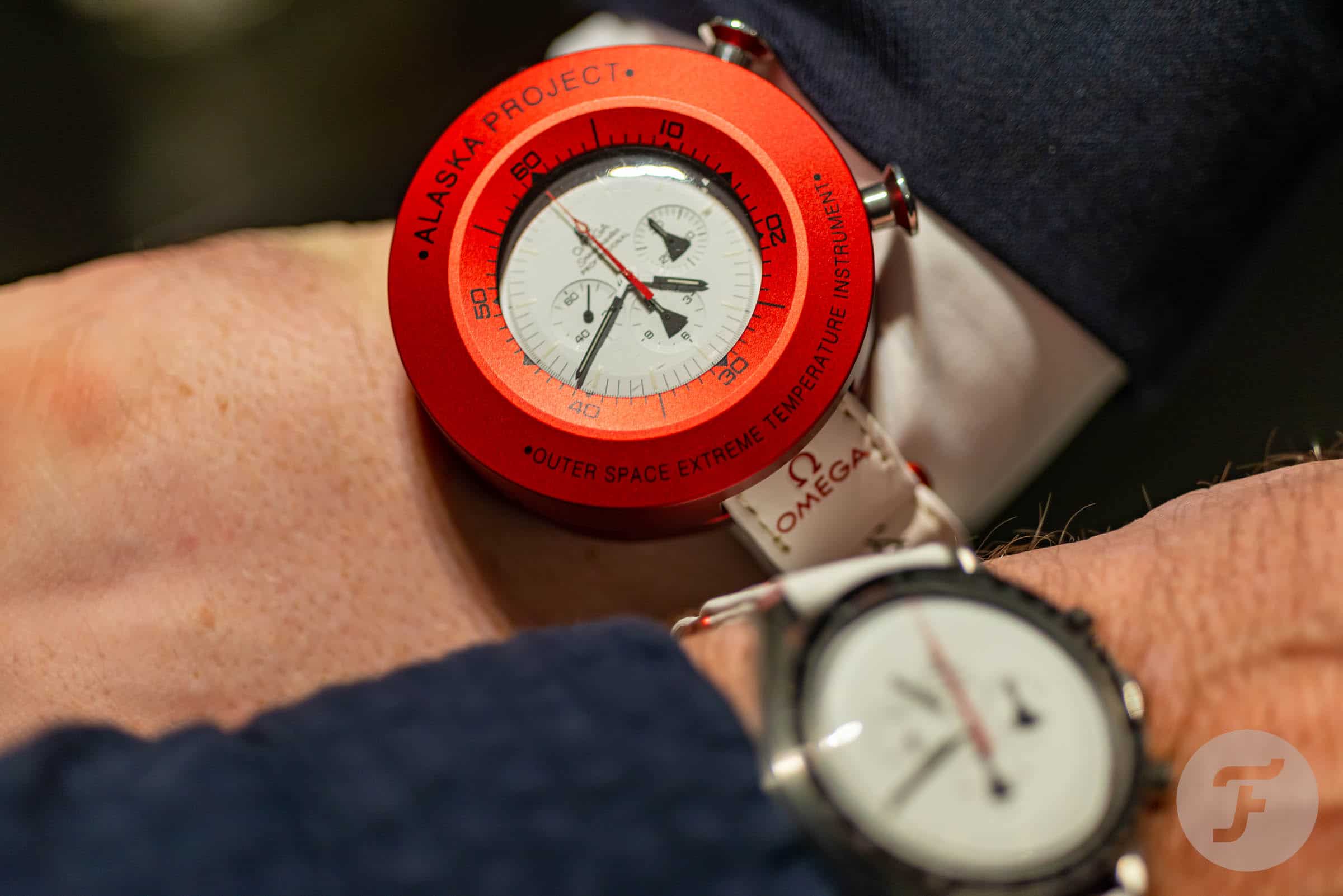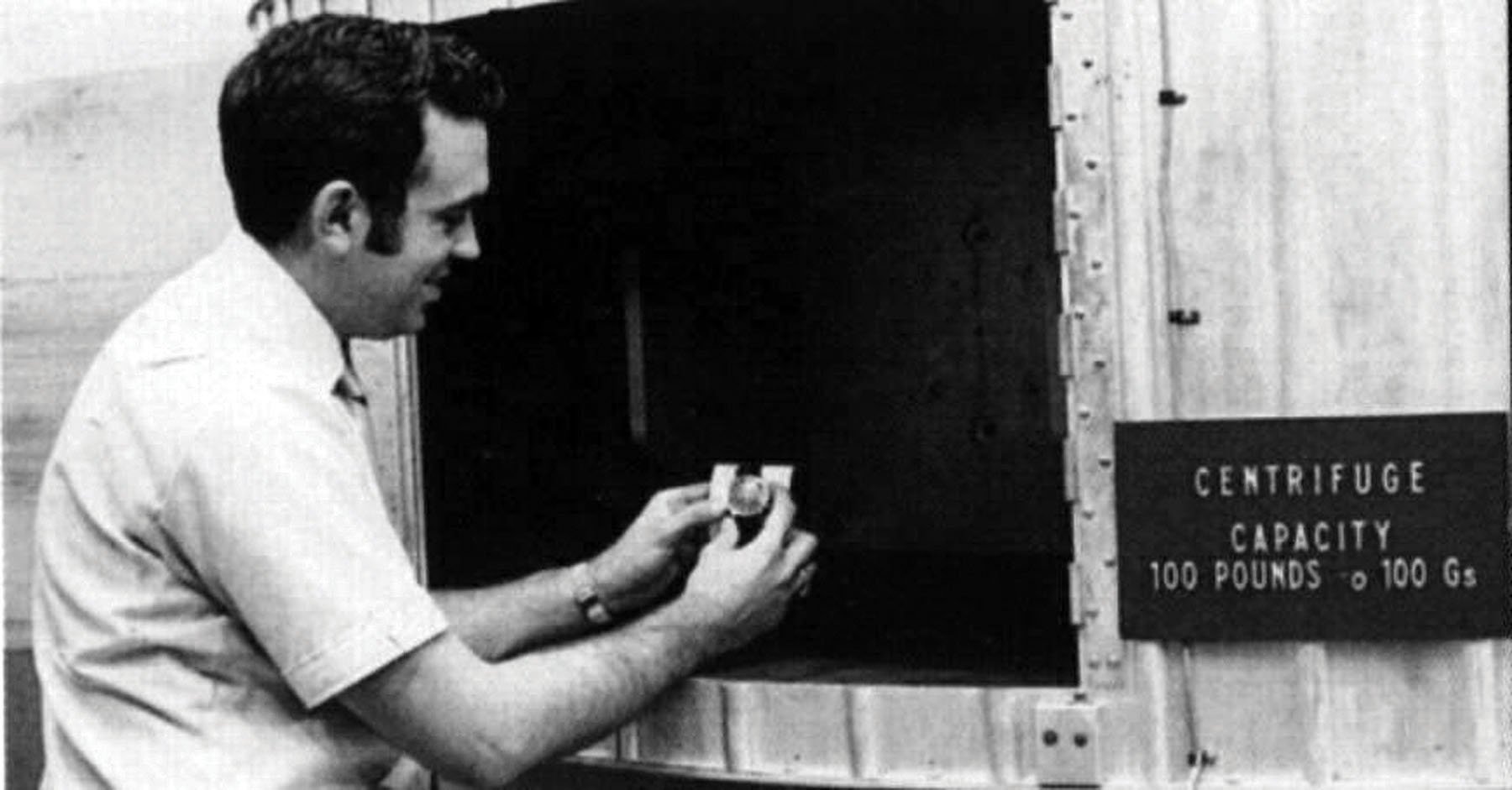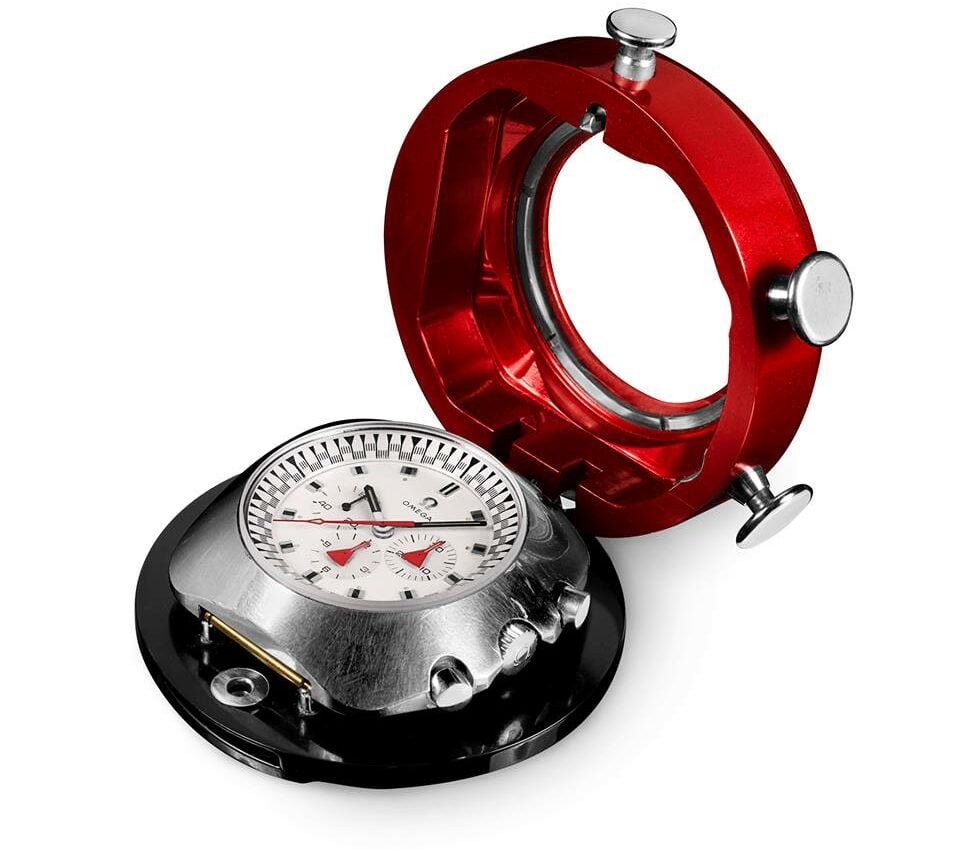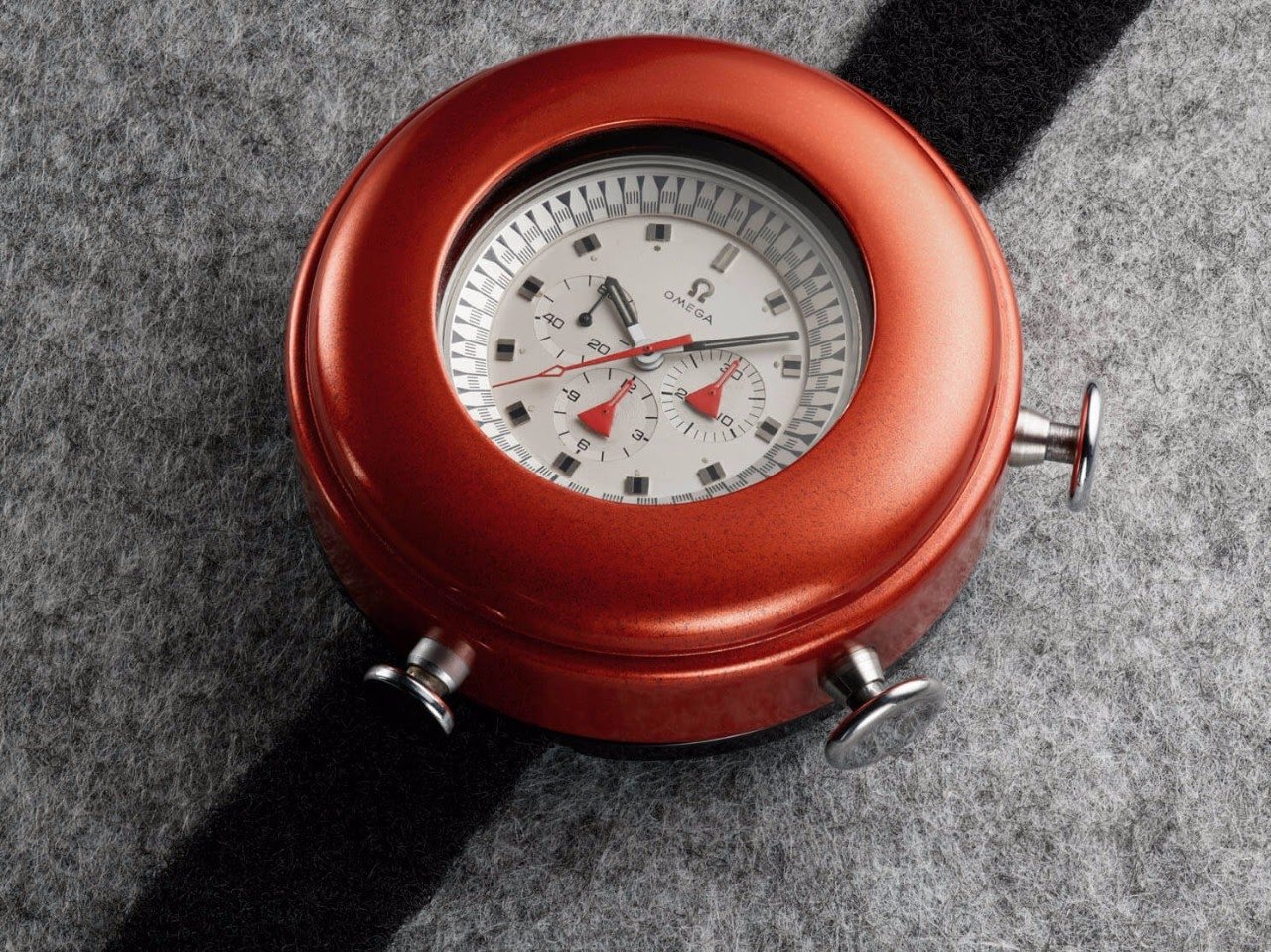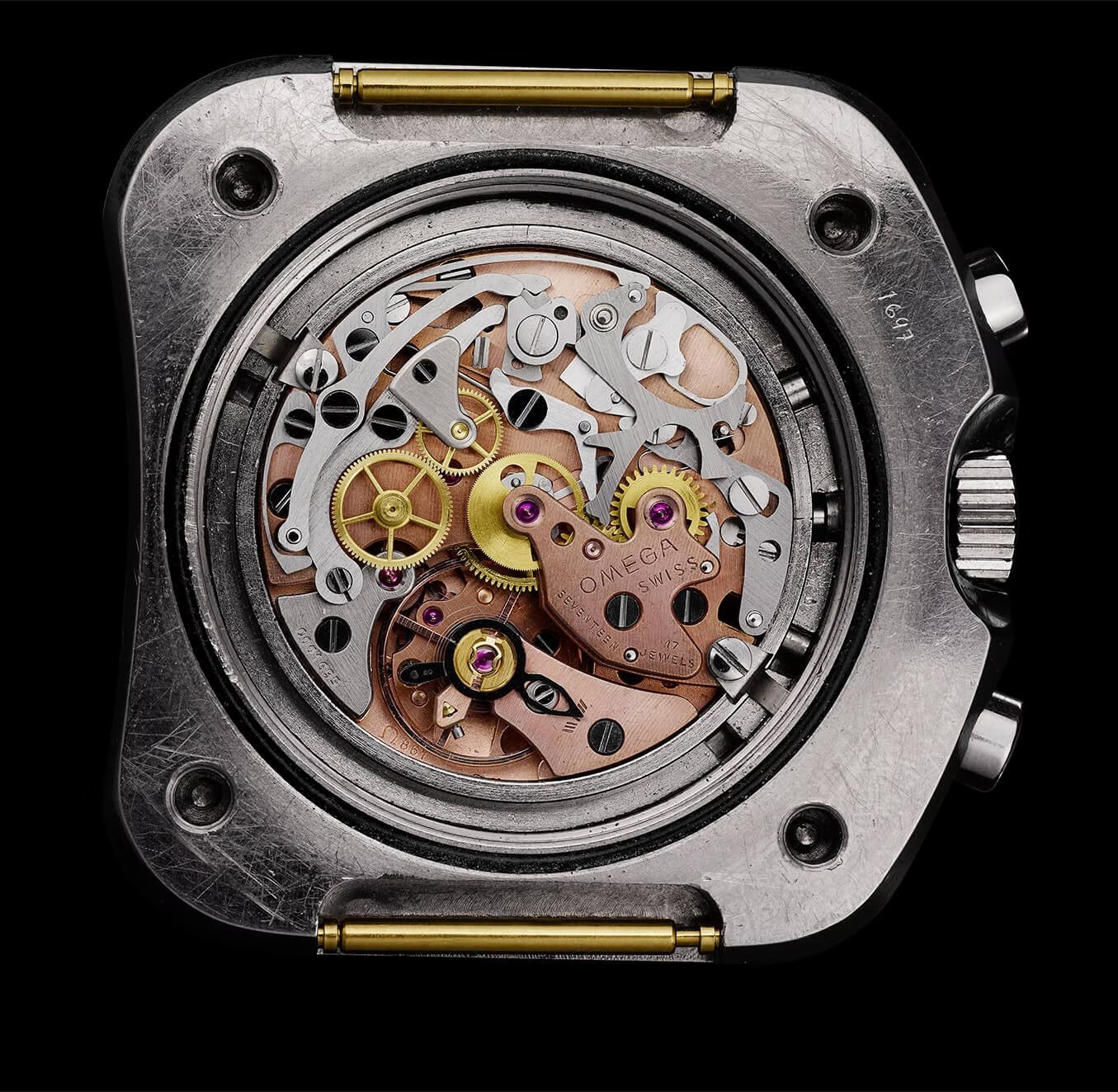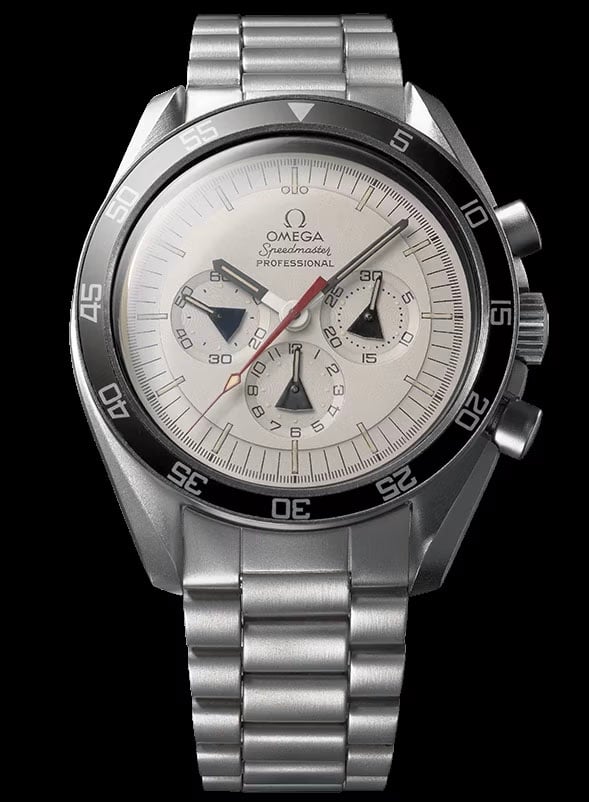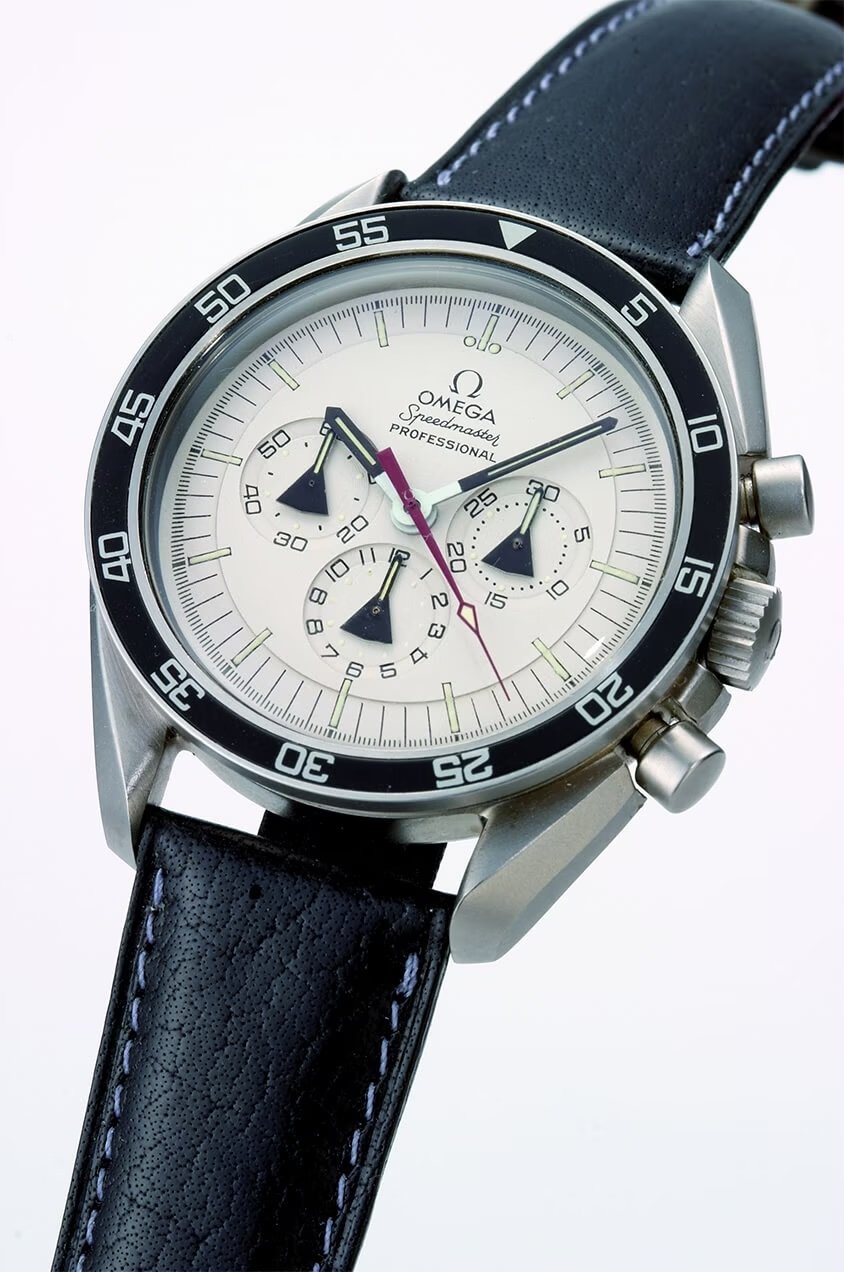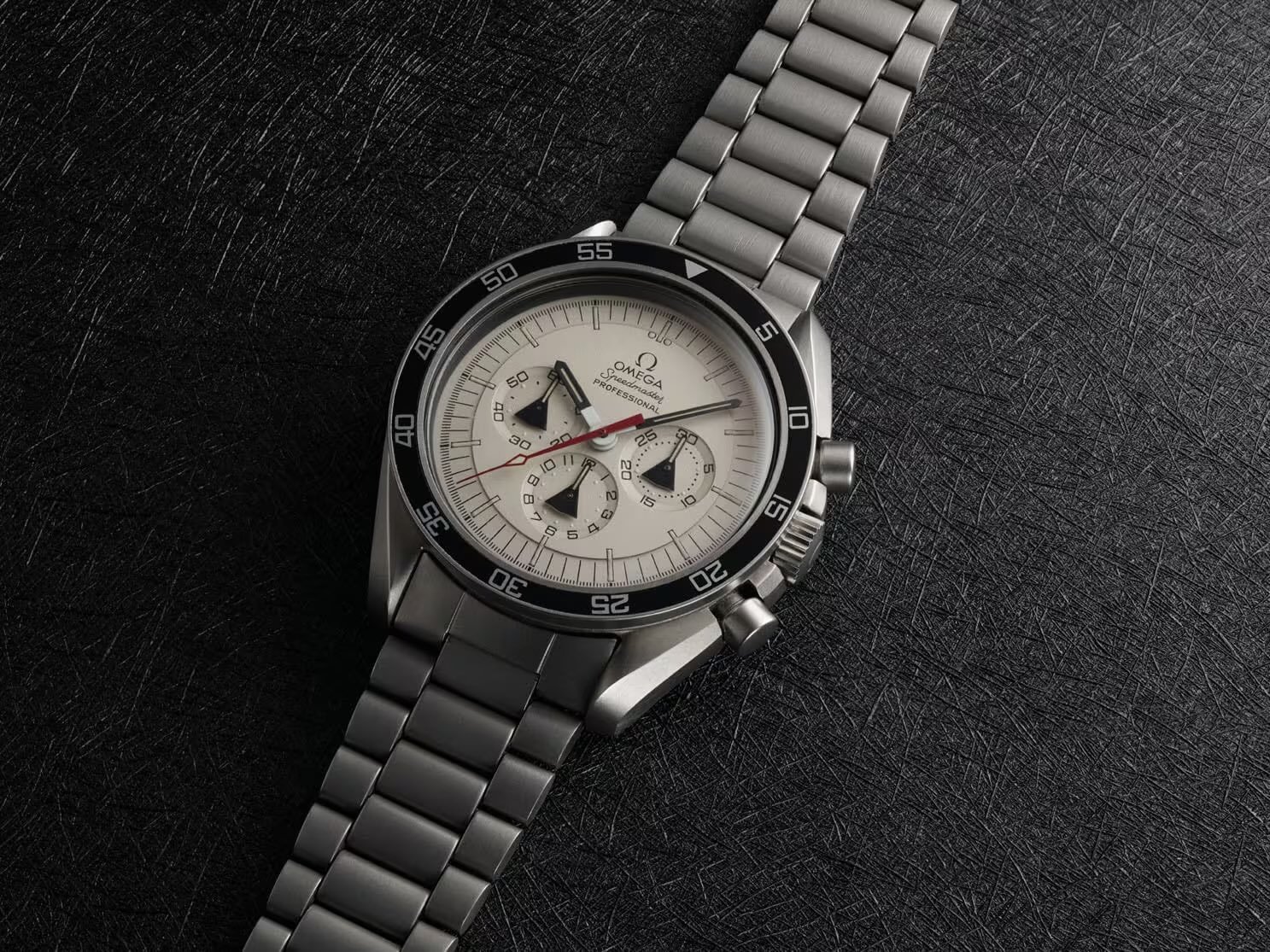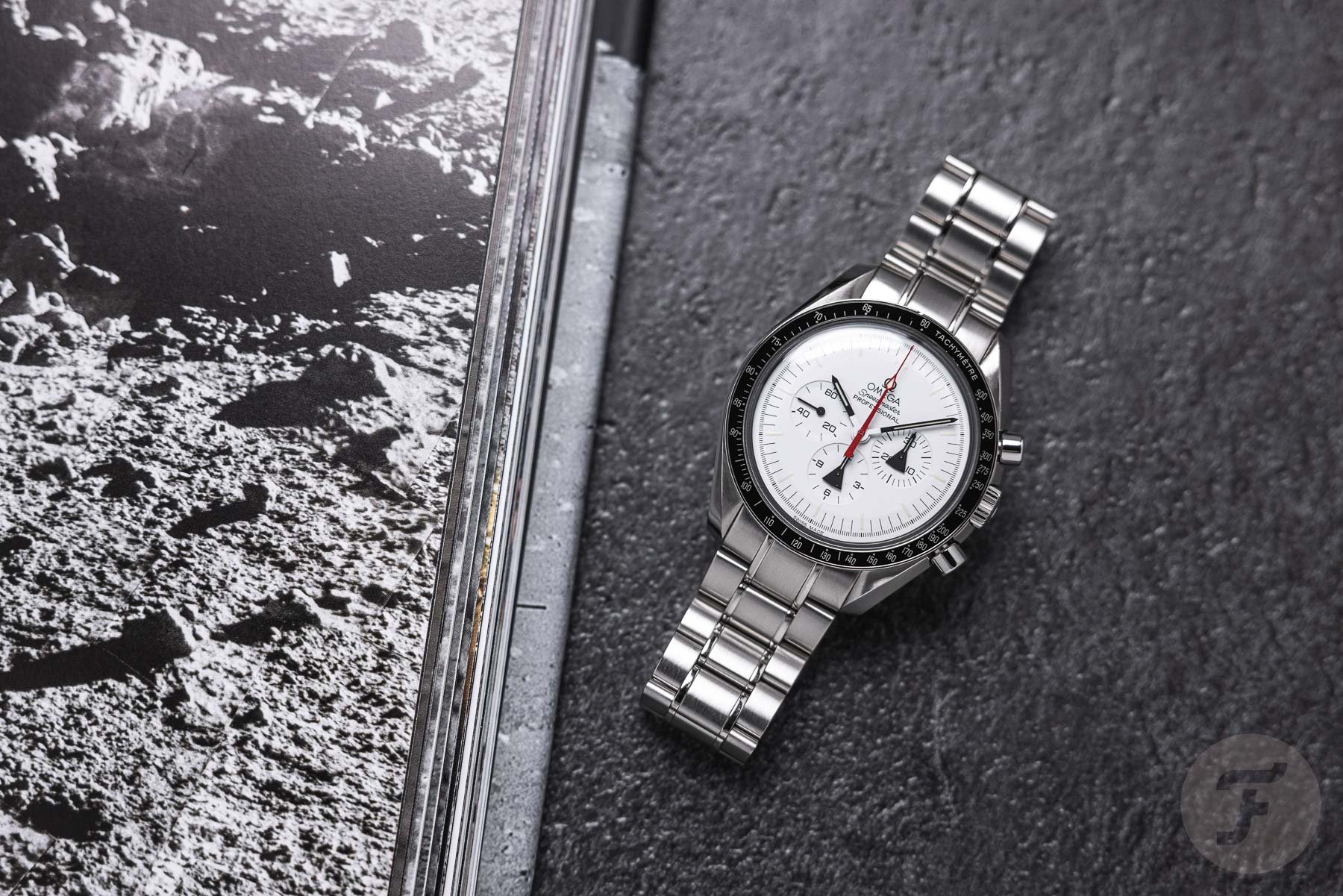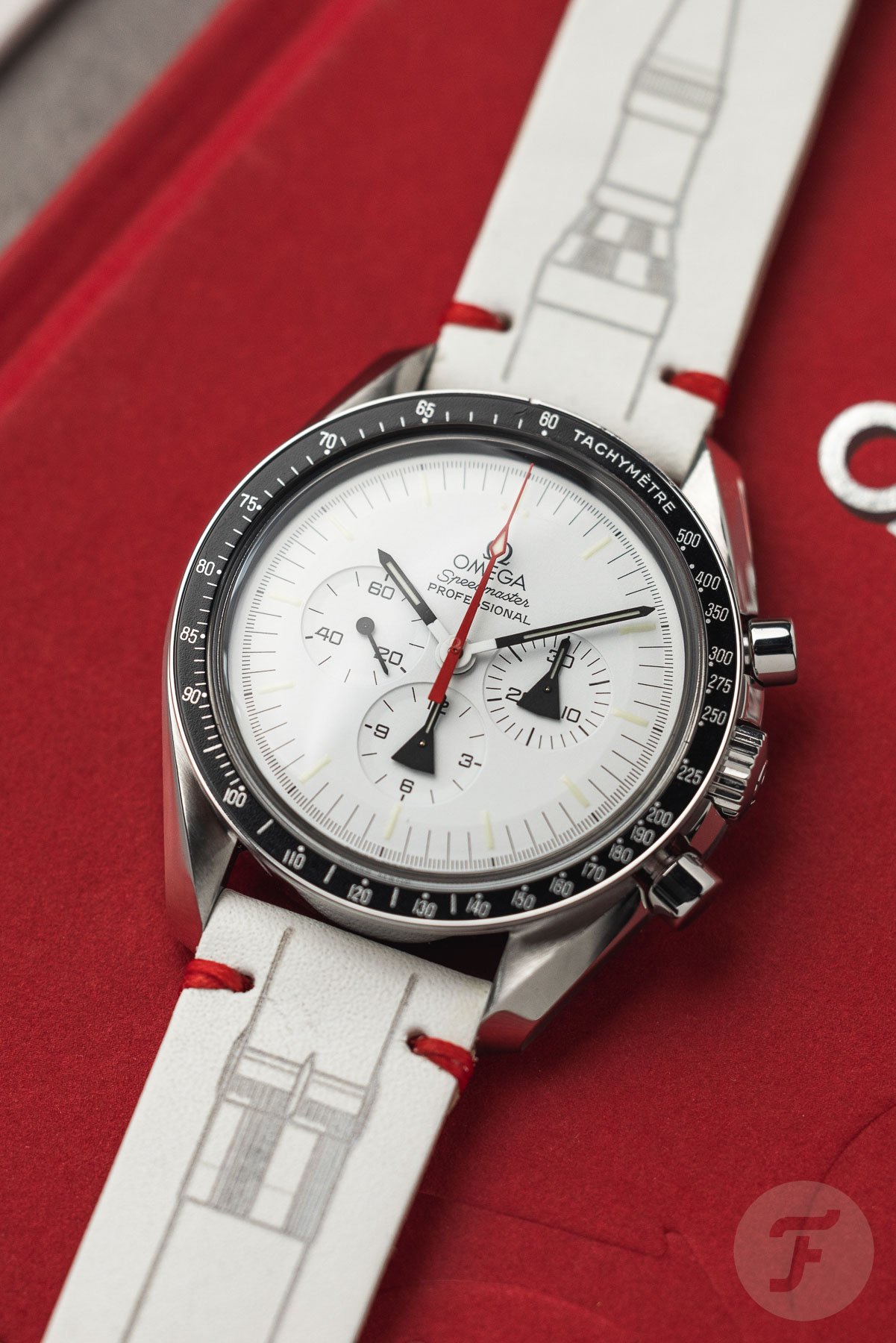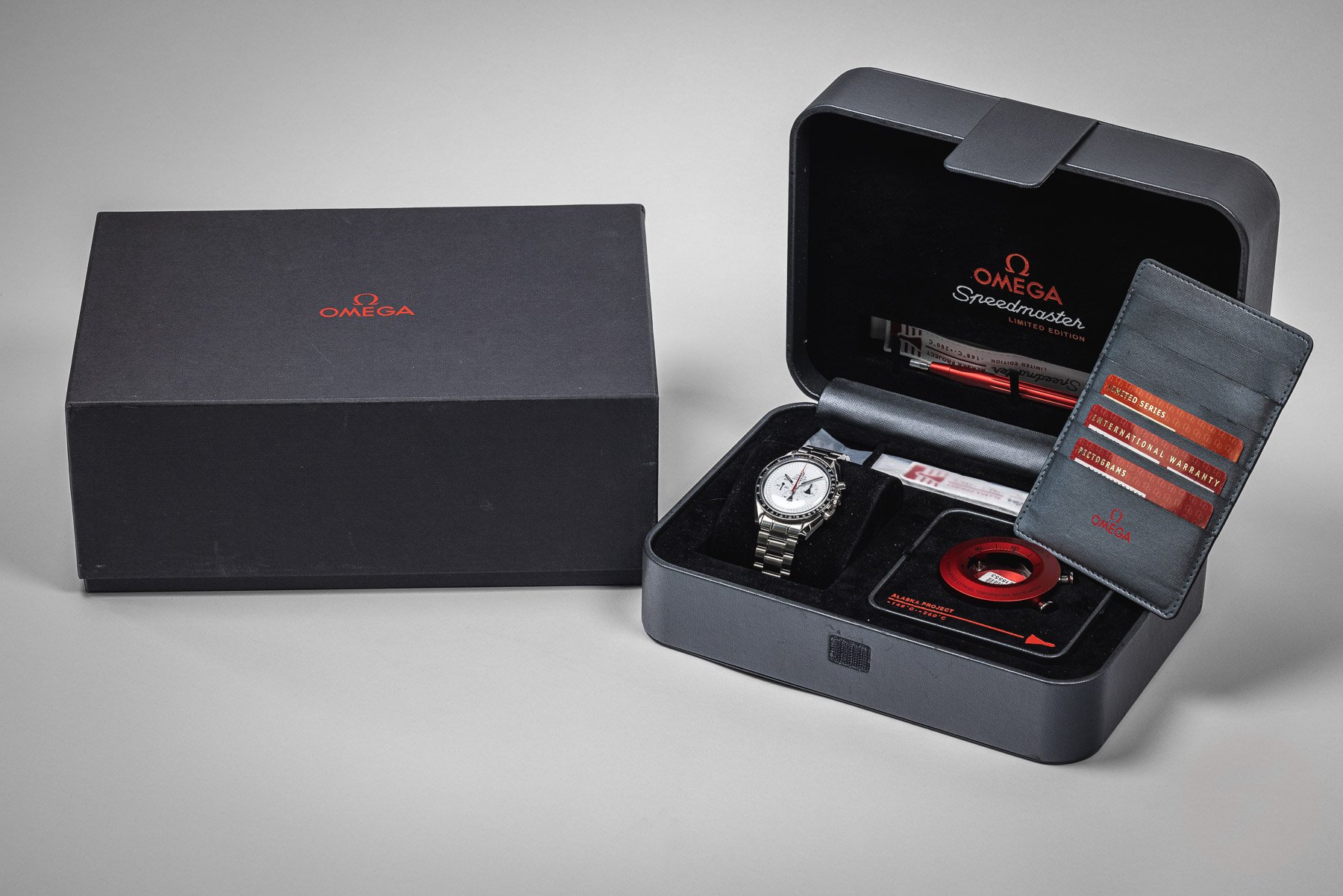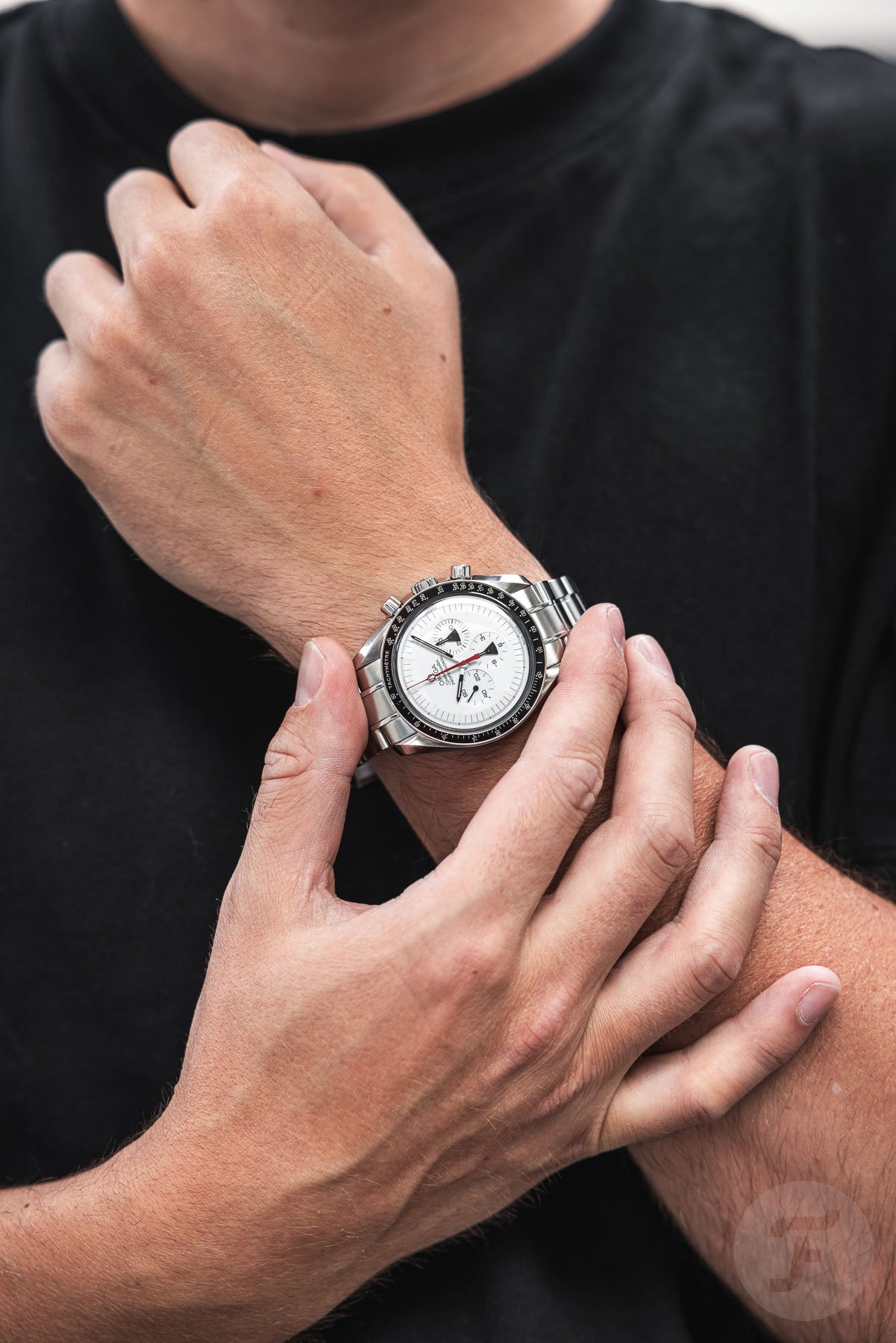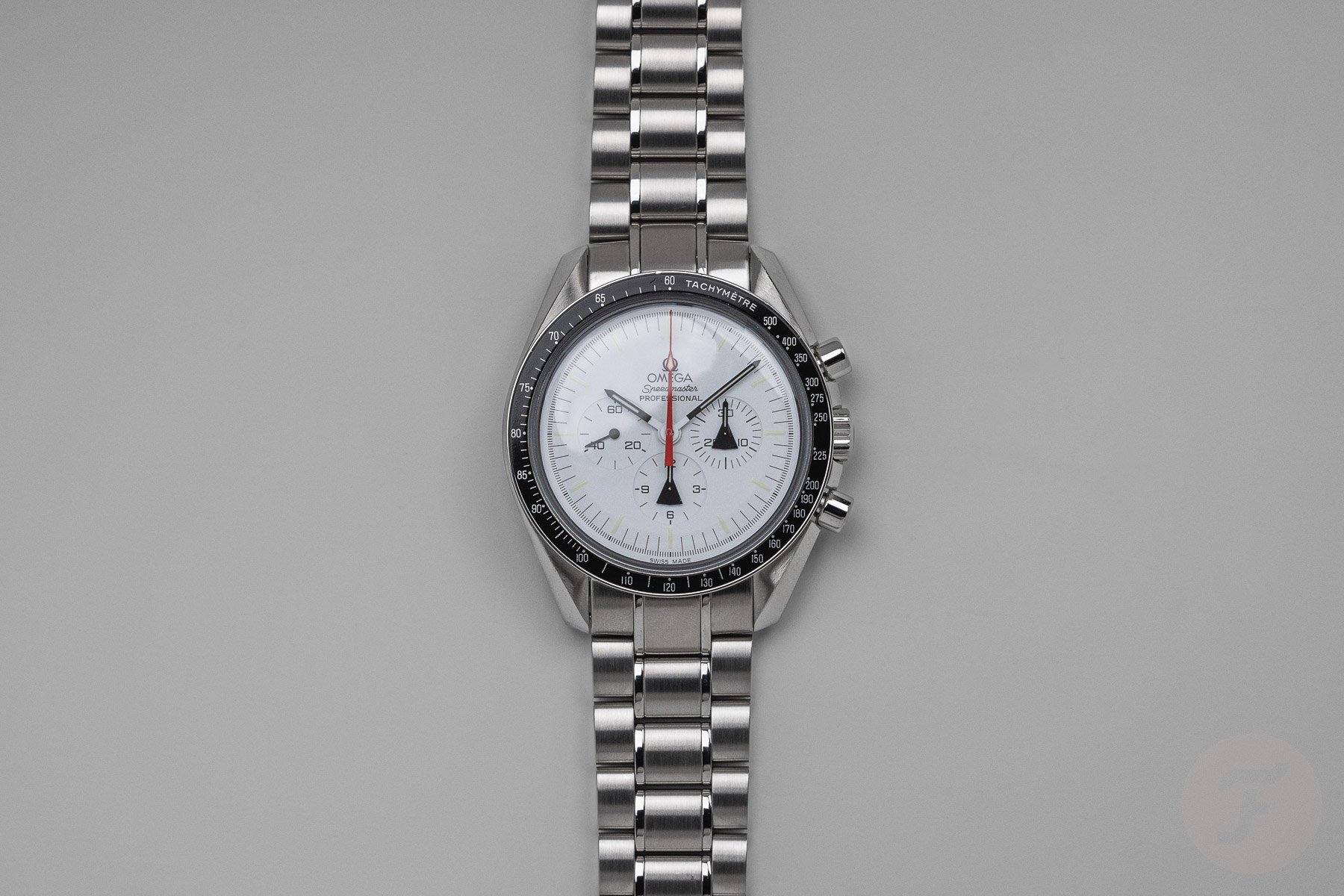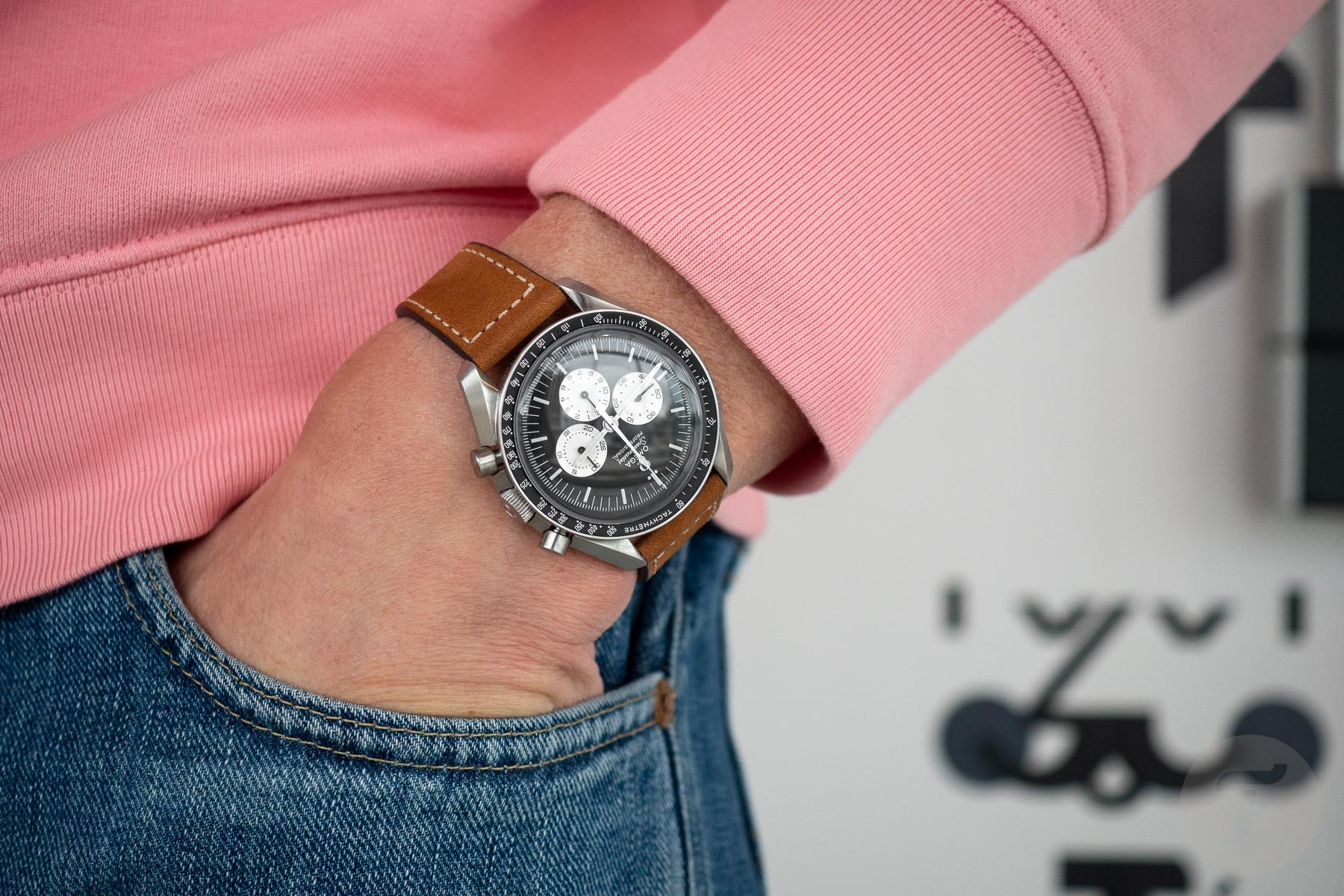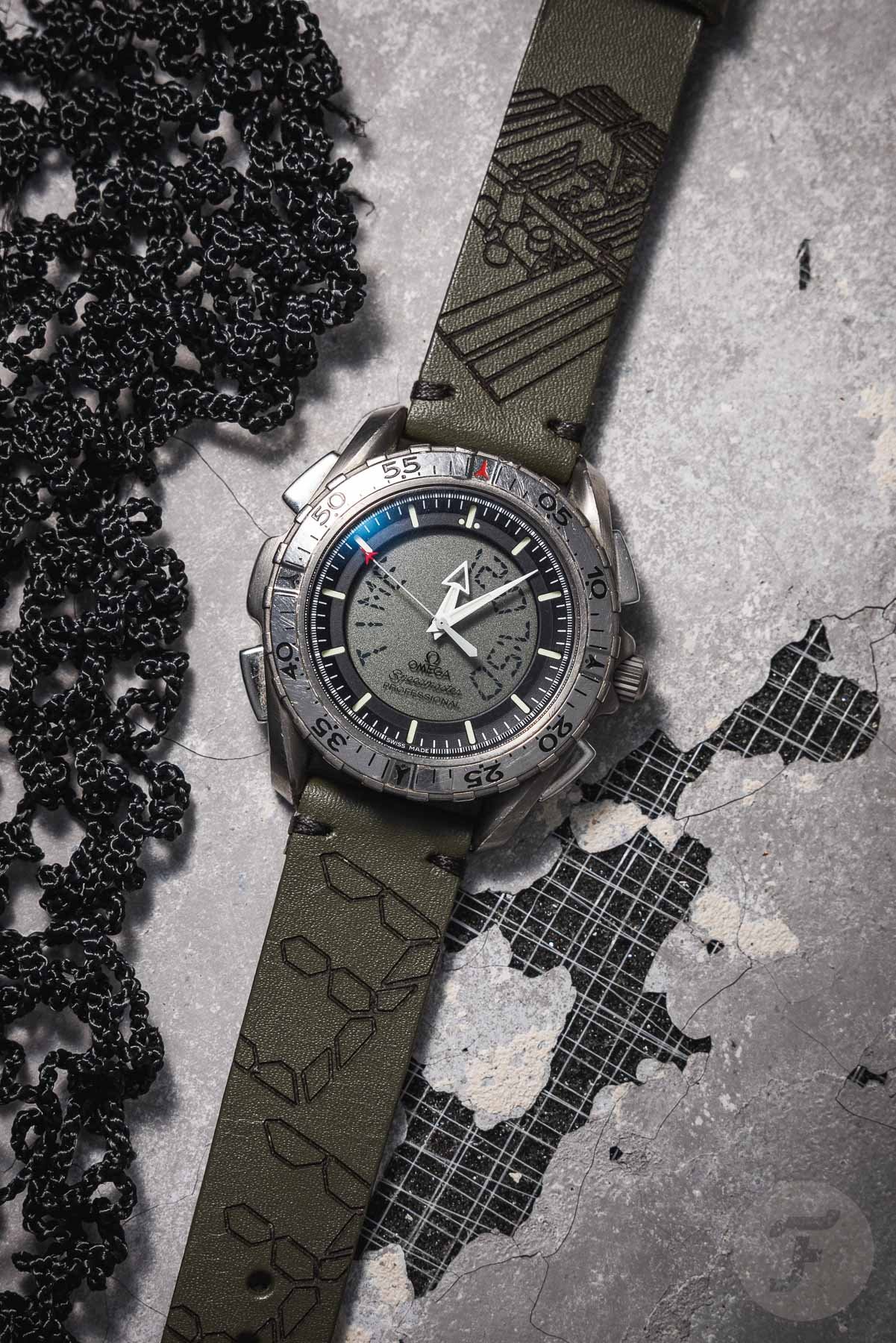The Omega Speedmaster Alaska Project Story
One of the most coveted Omega Speedmaster watches is the Alaska Project model from 2008. Surrounding it is a myth about the original white-dial Speedmasters that Omega designed for NASA, but it also stands out because of its stark white dial with rocket hands and a red chronograph seconds hand.
Codename Alaska Project
When Omega introduced this Speedmaster Alaska Project in 2008 as a limited edition of 1,970 pieces, Speedmaster watches were in a different place than they are these days. Even the limited editions that are highly desirable now took some time to sell back then. Today, the 2008 Speedmaster Alaska Project is a prized possession in the collection of Speedmaster enthusiasts.
The exciting bit is the story behind this white-dial Speedmaster (with reference 311.32.42.30.04.001). It all began in the late 1960s when NASA engineer James (Jim) H. Ragan, who had previously worked on the testing procedures for watches and cameras for the Apollo project, continued developing specifications for the equipment that astronauts would use.
The project name “Alaska” has little to do with the state besides its name. Omega used code words for a lot of its projects. This was to minimize the risk of industrial espionage. The company often used city, country, or state names for top-secret projects. The Alaska Project codename was for everything concerning NASA, and Omega used it until the late 1970s.
Fulfilling NASA’s wishes
If astronauts were to be able to use the Speedmaster chronograph during extravehicular activities (EVA), it had to be shockproof for use on the Lunar Rover but also resistant to very high temperatures. On the Moon, the temperature can go up to 120 degrees Celsius since there’s no atmosphere.
The first Speedmaster prototype that Omega completed according to these requests was the titanium Alaska Project in 1969. The movement, based on Omega’s caliber 861, used different materials and oils to withstand high temperatures, and the titanium case was protected by a red outer case made of anodized aluminum. Furthermore, the watch had a silver/white dial to better reflect sunlight and heat.
Lastly, this Alaska Project model used two rocket-shaped — or, more accurately, capsule-shaped — chronograph hands for better readability. They acted as arrows pointing towards the minute and hour tracks when the reading conditions were not optimal, mainly due to vibrations. Omega produced an initial set of five Alaska Project prototypes in 1969.
However, while this Speedmaster Alaska Project prototype ticked many boxes for NASA, the production costs were too high. Consequently, Omega produced other less costly prototypes using the standard 42mm Moonwatch case, for example. The Alaska Project prototype from 1970 with a white dial, capsule hands, and tachymeter bezel was the inspiration for the 2008 Project Alaska watch.
The 1970 Speedmaster Alaska II
Omega developed the Speedmaster Alaska II watch right after the first version. This piece was very similar to the Speedmaster Professional of that time. It even used the same case reference (145.022-69). Inside was Omega’s caliber 861, the hand-wound Lemania-based chronograph movement. It isn’t clear to us why the first Alaska Project prototype in titanium had such a strange case shape. Whether it was for a specific shock-related reason, due to other technical requirements, or just purely functional, we don’t know. While many elements of the first version disappeared in the second, what stayed was the red anodized aluminum outer case to protect the watch from the high temperatures (up to 120 degrees Celsius in direct sunlight).
The red anodized aluminum case had a 60-minute scale, which rendered the tachymeter scale unusable. That said, as far as I know, the tachymeter scale is not very useful in space anyway (correct me if I’m wrong). A 60-minute scale makes more sense since astronauts could use it to mark a certain time in conjunction with the minute hand. Later Alaska II prototypes had a 0–60 bezel instead of the tachymeter-scale bezel.
Interestingly, some versions of the 1970 Speedmaster Alaska II also used the rare “220” tachymeter bezel. This is, in fact, a bezel with an error. There should be a “200” where it says “220.” Regular Speedmaster 145.022-69 references (from 1970) with this specific faulty bezel fetch more than the correct ones. It’s quite interesting that Omega used this bezel for one of its prototype watches.
Although the dial color is similar to that of the first version, the two are quite different. The first one had a sloped rehaut, applied hour markers, and no “Speedmaster” marking. By contrast, the Alaska II featured a stepped dial, printed hour markers, and the “Speedmaster Professional” designation. The hands remained similar, with capsule-style sub-dial/chronograph hands, a red chronograph seconds hand, and black hour and minute hands. The capsule-shaped hands, however, changed from red to black, as you can see. Furthermore, the sub-dials were deeply recessed and featured large, radial numerals. The common belief is that there are only very few of these Alaska II watches in existence.
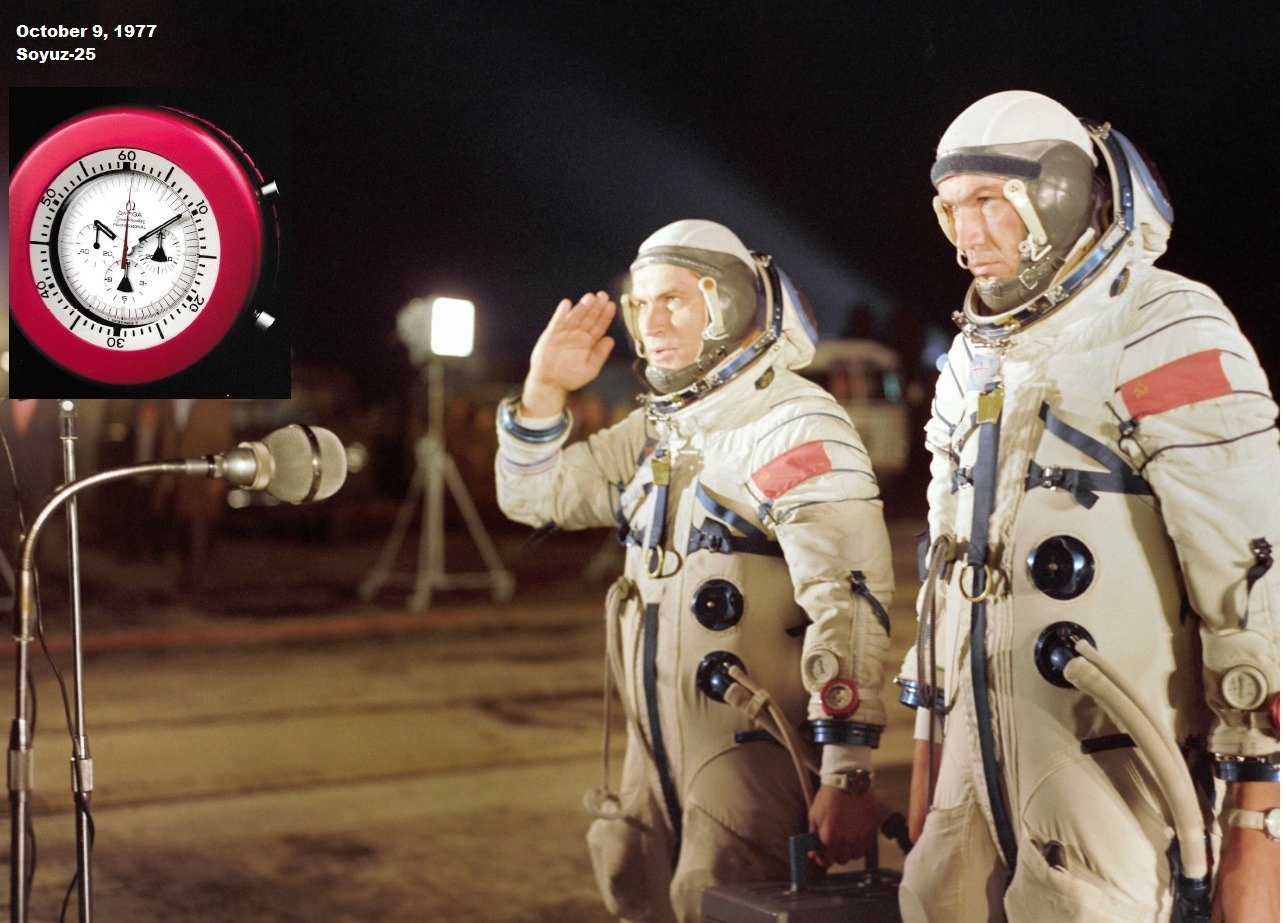
Soyuz 25 cosmonauts Vladimir Kovalyonok and Valeri Ruymin on October 9th, 1977 — Image via Moon Watch Universe
Although the Speedmaster Alaska Project never made it into any of the NASA missions, it saw action on the wrists of Soviet cosmonauts from 1977 to 1981. According to Philip Corneille, who covered it in an article for SpaceFlight magazine in 2018, “Soyuz 25 cosmonauts Vladimir Kovalyonok and Valeri Ryumin wore Alaska II Speedmasters with red outer cases on the left forearms of their Sokol spacesuits.”
Later, in 1978, the Alaska Project II was also on the wrists of cosmonauts Vladimir Kovalyonok and Aleksandr Ivanchenkov during EVA. So, in the end, Omega’s specially developed Alaska Project made it to space.
The 2008 Speedmaster Alaska Project
In 2008, Omega introduced its Speedmaster Alaska Project ref. 311.32.42.30.04.001. A re-edition of a prototype is interesting as only a few other brands have made them. Later on, Tudor did something similar with the Black Bay P01, for example.
The original Speedmaster Alaska II case was based on the regular Speedmaster ref. 145.022-69. The new model has the regular Speedmaster case, 145.0022 (case reference, not watch reference!), similar to the Speedmaster Professional ref. 3570.50. What was different was the dial, of course, and the case back.
The case back had the “Flight-qualified by NASA for all manned space missions” as well as “Alaska Project Limited Series” and each watch’s unique number engraved. Only 1,970 pieces were made.
While the original 1970 Speedmaster Alaska II housed Omega’s caliber 861, the 2008 limited edition features the 1861. Based on the same Lemania chronograph caliber, this movement was discontinued for use in the Moonwatch in 2021 and replaced by the 3861. Previously, Omega changed from caliber 861 to 1861 in 1997. The latter has a rhodium finish, while the earlier 861 movements had a copper color. The 861 movement in the 1970 Speedmaster probably still has the steel chronograph brake, while the 1861 uses the Delrin brake. The caliber 861 also has 18 jewels instead of 17. Omega made only small upgrades to the hand-wound Moonwatch movements between 1970 and 2008, but to the untrained eye, only the finishing colors of the movements are different.
The 2008 limited edition of the Speedmaster Alaska Project has a white dial as well as black capsule-shaped hands for the chronograph counters and a red chronograph seconds hand. What changed, of course, is the use of Super-LumiNova instead of tritium, hence the now-yellowish hour markers on the 1970 model. When it comes to the red outer case, specifications tell us that it is resistant to temperatures from –148 to +260 degrees Celsius. It also looks a bit different from the 1970 Alaska II’s outer case. There is some text on it, specifying that it is the “Alaska Project” watch and an “Outer space extreme temperature instrument.” Also, the 60-minute scale is not highlighted in silver. It is also different on the backside. While the original one had a natural aluminum color there, the 2008 version is all red.
The new case is also a bit thicker than the original red anodized aluminum case, and the pushers have a different shape.
The other Speedmaster Alaska Project watches
As I mentioned earlier, “Alaska” was a codename for all NASA-related projects at Omega. Do you remember the 1978 Alaska III that Omega made for the Space Shuttle missions? It featured radial numerals on the sub-dials and a case back with NASA serial and product numbers. This project was for the Speedmaster’s requalification as an EVA watch for the Space Shuttle program. In 1978, it passed the tests, and Omega sent 56 pieces to NASA for use during the Space Shuttle program. Omega and Fratello used this watch as inspiration for the first Speedmaster Speedy Tuesday edition from 2017.
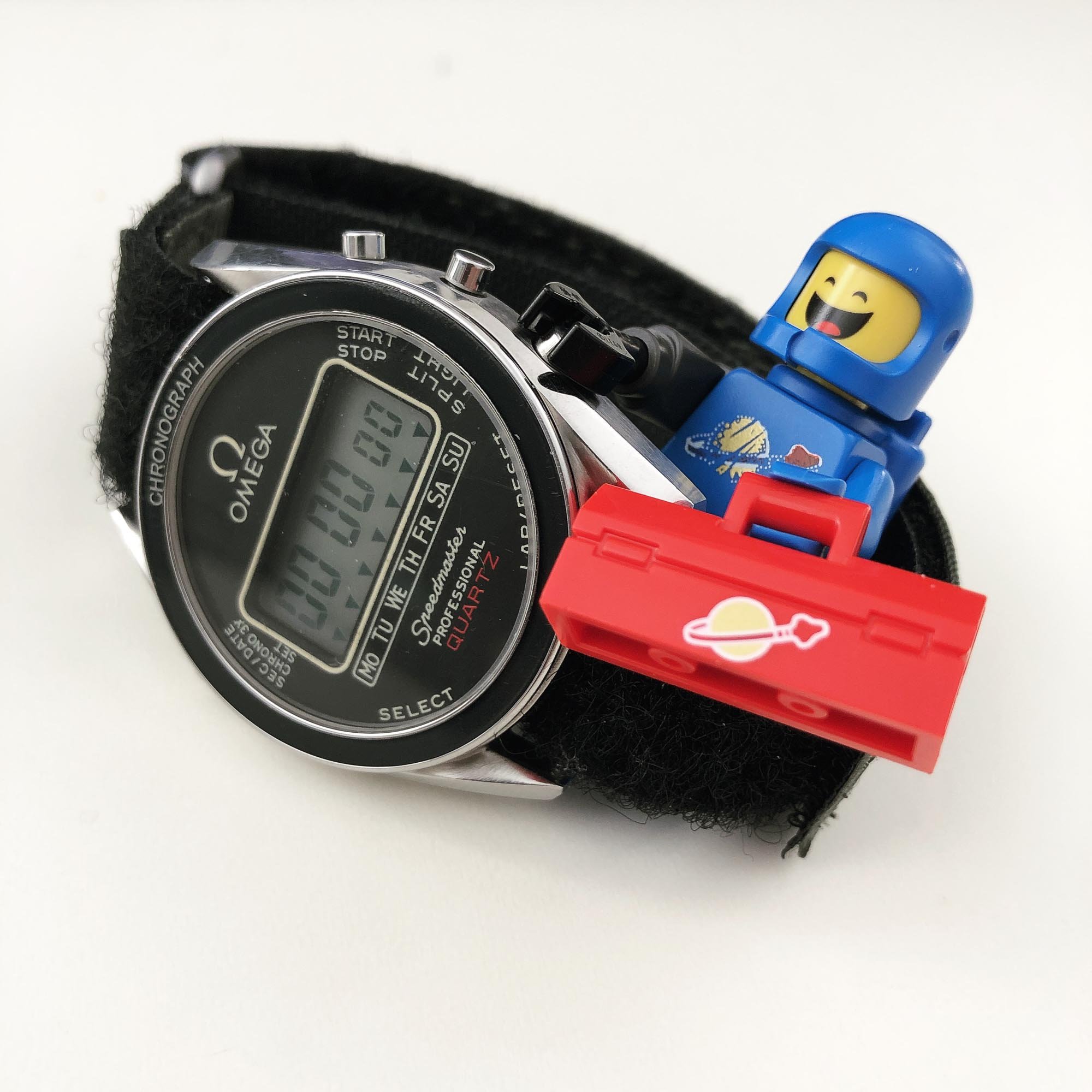
1977 Speedmaster LCD — Image: Shawn
In 1979, Omega created a new prototype for NASA, and Alaska IV was born. It was based on the Speedmaster LCD models from 1977. However, these watches were modified to have an illuminated chronograph display. Omega sent a couple of these digital versions to NASA for testing.
After the Alaska IV watch, these special projects didn’t end, but Omega stopped using the Alaska codename. In the mid-1990s, astronauts decided that they needed a new watch with some useful functions during space travel. Omega developed the Speedmaster X-33, which was tested by pilots, astronauts, and cosmonauts. However, the Speedmaster Professional remains the only watch qualified for extravehicular activity by NASA.

